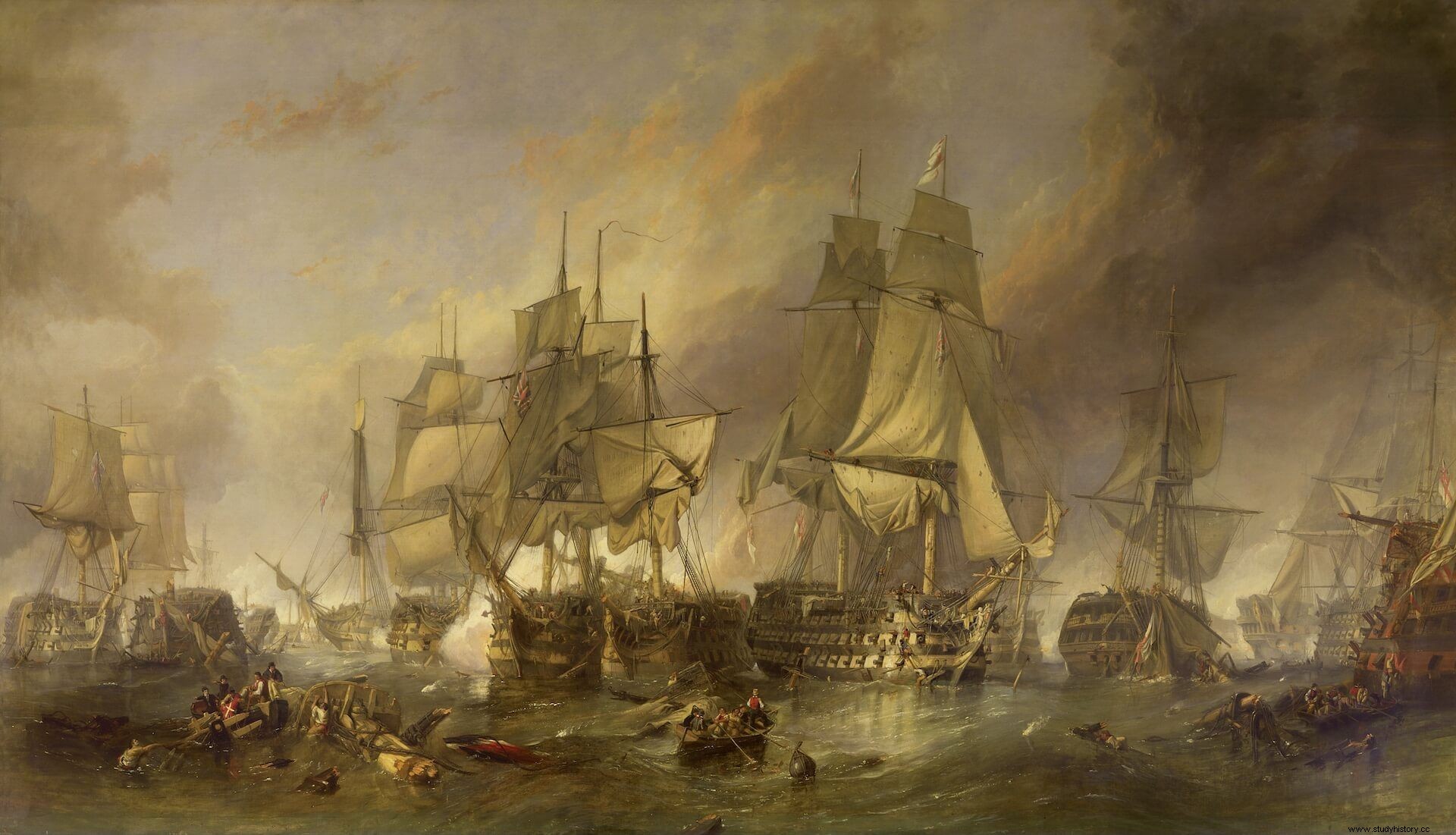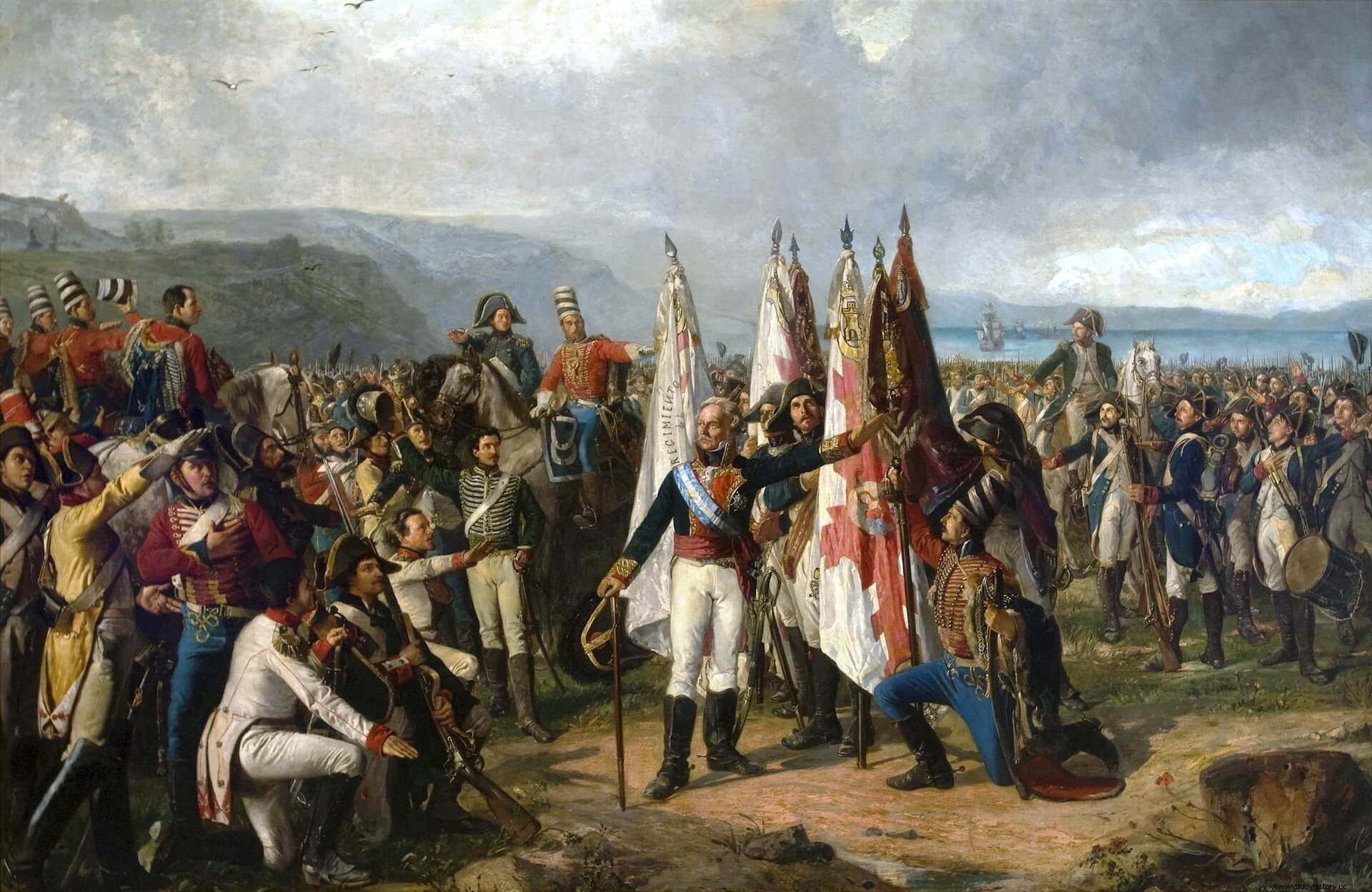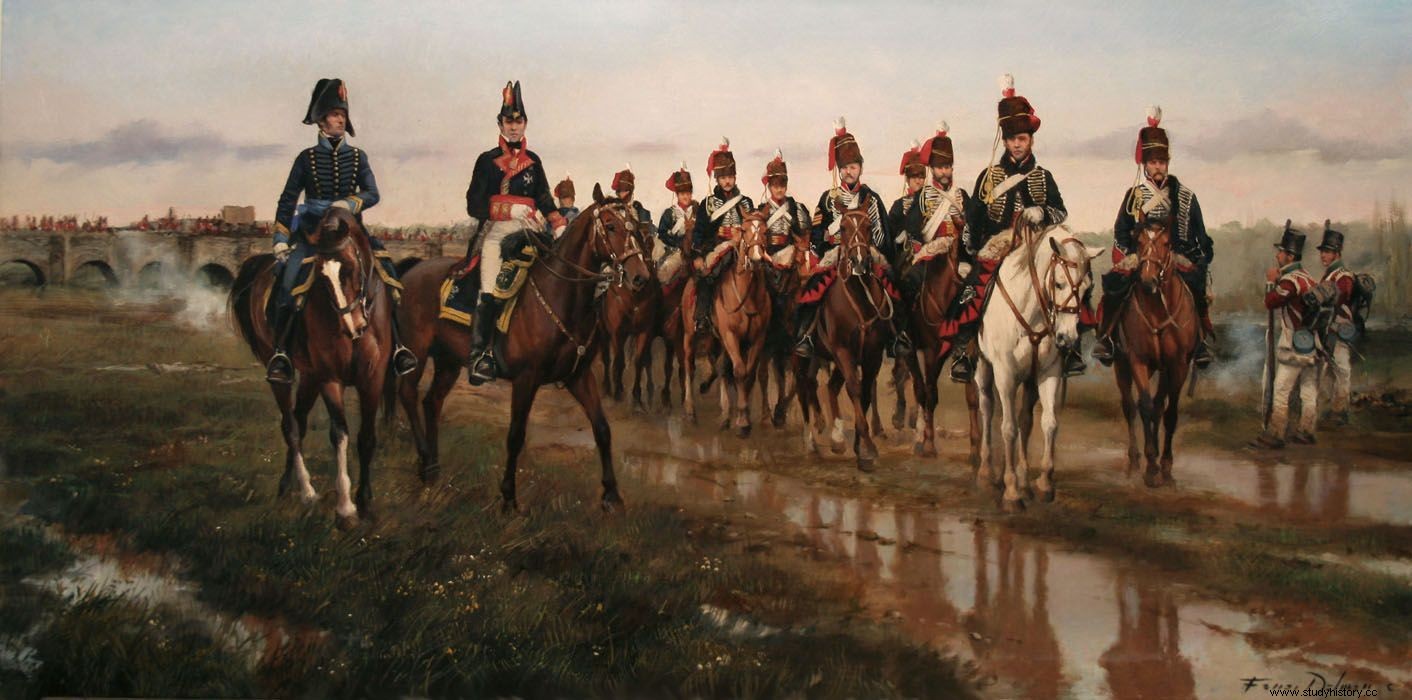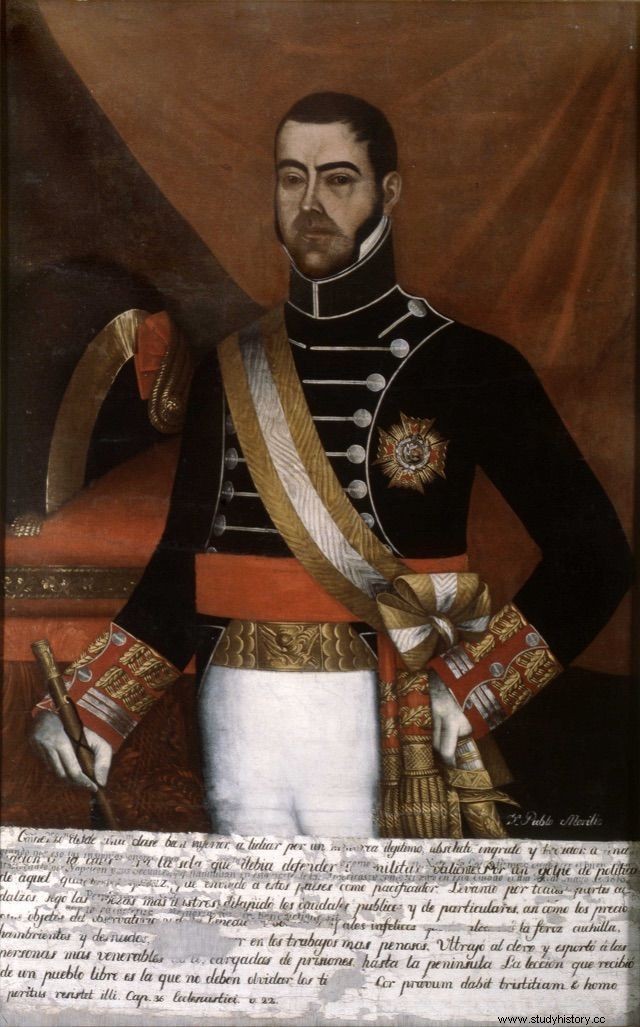
Born in 1775 in Fuentesecas, Zamora, Pablo Morillo He soon adopted military life and enlisted in 1791 in the Marine Corps, within which he participated in the Coalition Wars (1792-1797) against the French revolutionaries. For the services rendered to the Royal Navy during these conflicts, he was promoted to the rank of second sergeant in 1797, and would serve again in the Anglo-Spanish Wars (1796-1802 and 1804-1808), where he participated in the two most important naval battles. :Cape San Vicente (1797) and Trafalgar (1805), in which he was taken prisoner aboard the ship San Ildefonso.
The War of Independence Spanish (1808-1814) was his main military school, like that of many young officers like him, and in it he carried out the first important actions under his command. He began by enlisting in June 1808 in the Llerena Volunteer Infantry Regiment, in which he was placed with the rank of second lieutenant. Barely a month later he participated in the Battle of Bailén , in which he caught the attention of General Castaños, and after which he placed himself at the head of one of the many guerrillas that populated Extremadura. Specifically, he sent a group of two hundred men with whom he toured the Extremaduran countryside throughout the autumn to defeat the isolated groups of the French army. From this time stand out his actions during the siege of Yelbes, in which he was entrusted with missions of exploration and espionage of the enemy, among whom he infiltrated disguised up to three times; as well as the action carried out against one hundred and fifty French horsemen in Almaraz, who were put to flight by Morillo and his men after killing three of them and wounding nine. His activity in Extremadura earned him promotion to the rank of lieutenant in December 1808.
After peacefully quelling the mutiny of the Army of Extremadura, during which General San Juan died, Morillo was promoted to the rank of captain in the Spanish Volunteer Infantry Regiment in January 1809 to support the uprising in Galicia led by the Marquis of La Romana . During their trip to the north, Morillo and his men were captured twice by the Portuguese, who took them for French spies, although they managed to arrive on March 21 to reinforce the siege that the Marquis of La Romana maintained over Vigo. Faced with the division of the command of the besieging army, four thousand countrymen who were active in the siege hailed Morillo as a colonel and ordered him to agree to the surrender of the city as soon as possible, which he achieved on March 28.

After the capture of Vigo, Morillo devoted himself to harass General Mancune's retreat towards Santiago and Pontevedra, but he was defeated on the Redondela road and had to retreat as well. However, he later participated in the taking of Santiago, after which he had to face the advance of Marshal Ney, whom he defeated at the battle of Puente Sampayo. The victory of the Army of the Miño in Sampayo allowed General MacKinley to advance against Santiago, where Morillo entered with a flying division to pursue the French after defeating them in the field of La Estrella. During this campaign, Morillo formed the Infantry Regiment of La Unión with those men who had been under his command in Sampayo, which would follow him even in the campaigns on the other side of the Atlantic.
After finishing the campaign in Galicia in 1810, Morillo returned to Extremadura, where he dedicated himself to harassing the more isolated French forces, as well as re-enlisting those soldiers who were scattered throughout the towns in order to avoid the destruction that the guerrillas used to commit in the towns and impose discipline on them. He participated in several important combats, among which the attempt to take Badajoz stands out. For the services rendered by him, the Regency decided to promote him to the rank of brigadier.

In April 1813, the formation of five divisions for the IV Army and Morillo was placed as general commander in charge of the first of them. Then he received the order from the Duke of Wellington to go to Coria to place himself under his orders and resume the offensive towards Castile. From march to march, the Spanish, Portuguese and English troops passed from Castile to the Basque Country in pursuit of King José I, who moved from Madrid to Valladolid, from Valladolid to Burgos, from Burgos to Miranda and from Miranda to Vitoria. In the battle that followed the meeting of both forces in the vicinity of Vitoria , it was Morillo who began the attack and it was his division, together with two others of General Hill, the first to dislodge the French from their positions, despite the fact that he was wounded during the combat. For such actions he was awarded the Ferdinand VII cross and was promoted, on Wellington's recommendation, to the rank of field marshal in July 1813.
After the battle, Morillo headed towards the French border to occupy Roncesvalles and Valcarlos, after which he dispatched some regiments of hunters across the border and gained little to shortly enter French territory. On the occasion of a general offensive against French territory, he was again promoted to the rank of lieutenant general and participated in the battle of Orthez in February 1814 against Marshal Soult, dislodging part of the French army from their positions and being the first to form the blockade of the city of Navarrens.
Pablo Morillo in America
Peace with France came shortly after the Orthez offensive, but not for our protagonist. Shortly after arriving in Madrid he was appointed captain general of Venezuela and general in chief of the expeditionary force that was to fight the American rebels.

The expedition set out in February 1815 with the objective to pacify the general captaincy of Caracas, reconquer Cartagena de Indias and support the royalist army in New Granada, commanded by Viceroy Francisco de Montalvo. Later, surplus troops were to be sent to Peru, and if possible also to Mexico, to assist in their pacification. Although Morillo managed to fulfill the first objectives and reinstate Francisco de Montalvo in the viceregal capital of Santafé de Bogotá, his was an unstable victory, since Bolívar he threatened to take over again the center of the viceroyalty. With an army decimated by three years of fighting, the Peacemaker, as Morillo was then known, faced the Liberator in the Third Battle of La Puerta . Despite the fact that the republicans had more than twice the forces of Morillo, it was essential to stop Bolívar's advance towards Caracas, so he ordered a first royalist cavalry attack to achieve this. Although the first assault failed, it gave enough time for the royalist infantrymen to join the fight under the command of Morillo himself to break the republican lines, although this cost him a serious injury.
This was, again, an unstable and temporary victory, because some time later Bolívar managed to prevail over the royalists in the battle of Carabobo while Morillo obtained his long-awaited retirement in the Peninsula, where he would become one of the most faithful followers of Fernando VII and Isabel II, whom he defended throughout his life.
Bibliography
Cuño Benito, J. (2018) “Morillo's expedition to New Granada” in Desperta Ferro Modern History #33.
Rodriguez Villa, A. (1920) Lieutenant General Don Pablo Morillo I. Madrid:Editorial America.
Sevilla, R. (1920) Memoirs of a Spanish army officer:campaigns against Bolívar and the American separatists . Madrid:Editorial
